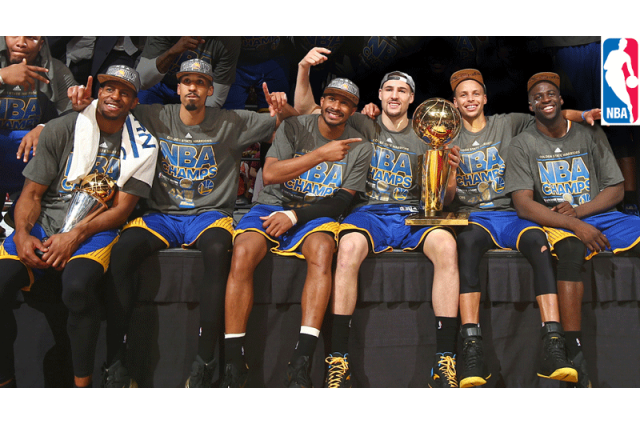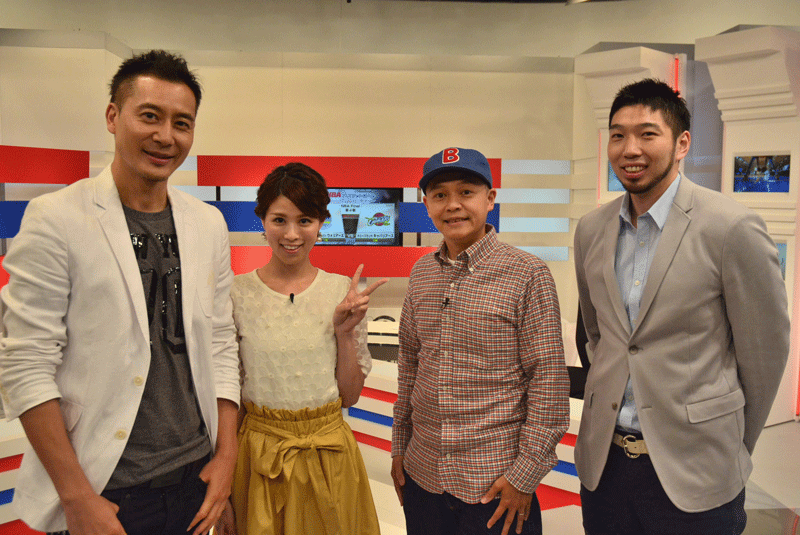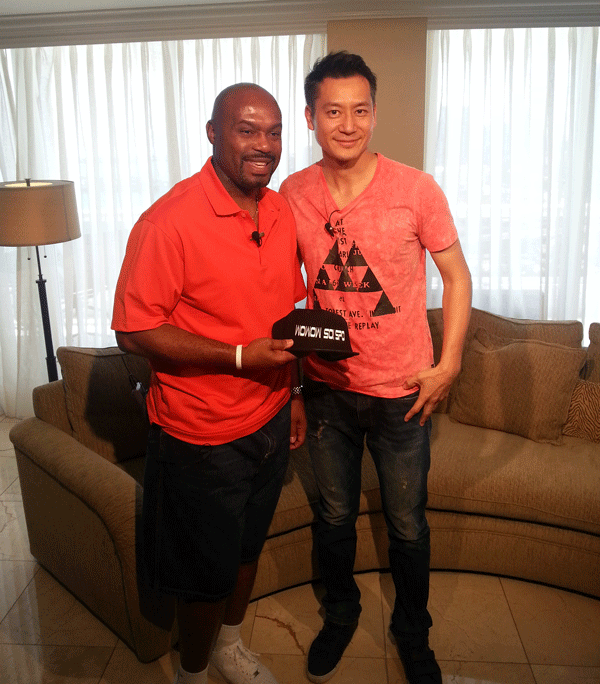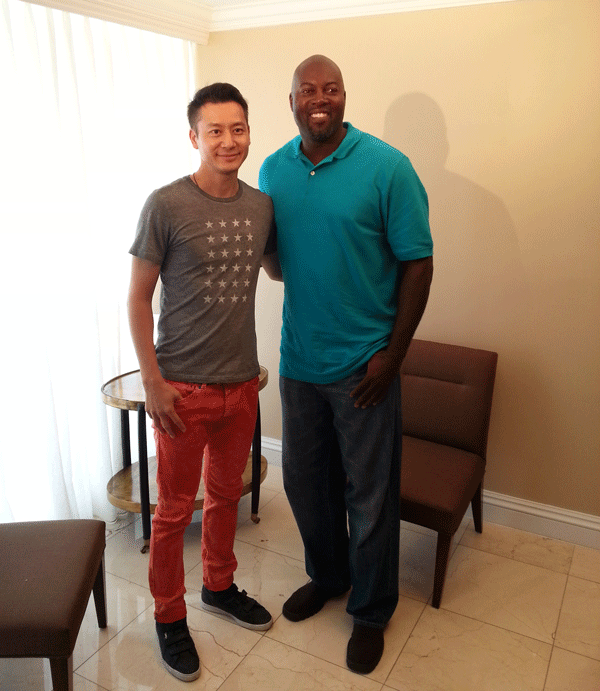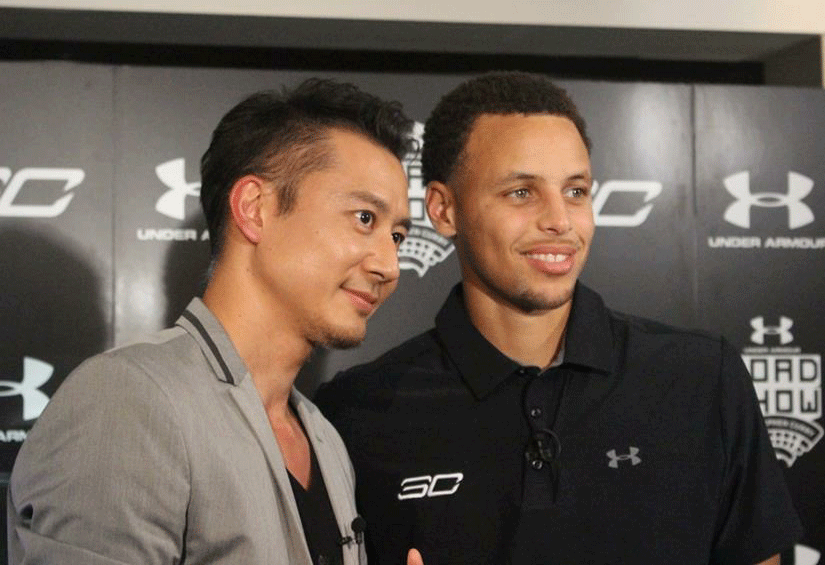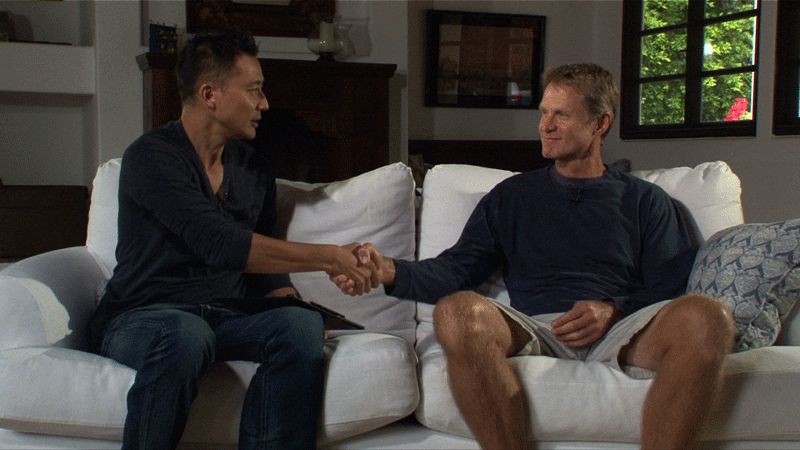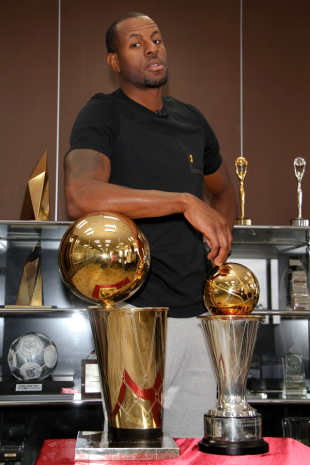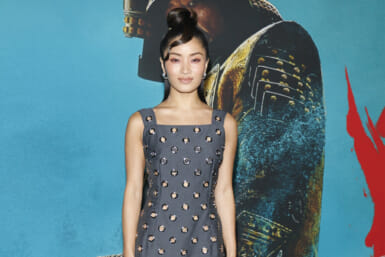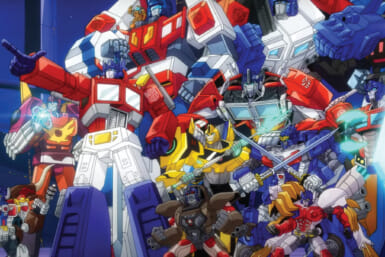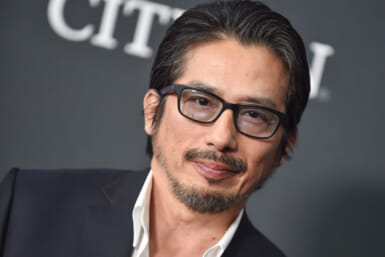Members of the 2014-15 NBA Champion Golden State Warriors celebrate – Andre Iguodala (far left) holds the NBA Finals MVP trophy ( (c) 2015 NBAE Photo by Nathaniel S. Butler/NBAE/Getty Images)
A member of a broadcasting team that’s bringing NBA action to Japanese audiences looks to raise the stature of the game for a younger generation.
By Alec Jordan
If you’re used to watching pro basketball in the U.S., you know that the running commentary, or the halftime and post-game chatter, can be as entertaining as the action taking place on the court. It’s part of what draws fans in, and keeps them watching. Actor/model-turned commentator Sotaro Nagasawa has been trying to bring a bit of that magic to NBA fans in Japan. He’s also trying to use the media platform as a way to rekindle a stronger interest in basketball here, in the hopes that some young talent in the country will be inspired to reach for stardom on the Japanese courts – or beyond.
But Nagasawa, who has been hosting coverage of the NBA with the pay broadcaster WOWOW since 2011, wasn’t a serious basketball player as a kid, and he found out about the hosting opportunity through a pickup game. One of Nagasawa’s friends from his modeling days persuaded him to join in the regular games, which eventually drew as many as 40 players at a time. These big numbers led to two things. One was a strong—if unfair—showing for their lineup when they entered their local ward’s basketball tournament: “Actually, we had an advantage, because most of the models are tall (laughs), and we had friends from the national team coaching us on how to play zone defense.”
The other was that Nagasawa realized just how many of his contemporaries had grown up playing the game, and how many were also die-hard fans of the NBA. Over post-game sessions at the izakaya, conversations would frequently revolve around the love they had for basketball as it was played in the U.S., and the general lack of a strong basketball culture in Japan. “We don’t have a national arena for basketball where kids can dream about being a superstar, or even just dream of being a professional athlete,” Nagasawa explains. Given the number of models and actors holding court, one idea that they came up with was to try to use media’s influence in some way, but as Nagasawa recalls, these seemed like just the kinds of ideas you talk about over a few beers.
The chance was closer than he’d thought. One of his pickup teammates was a former pro who was now coaching at a university and doing some regular commentating work for another broadcaster. When the news came that WOWOW was buying rights to broadcast NBA games in Japan, his friend recommended that he give it a shot. Nagasawa said he was surprised that the broadcaster was willing to roll the dice on a relative unknown, but he landed the job.
The beginning wasn’t easy: “I think that I was really bad for the first couple of months, but everything was a learning process, and the staff was so supportive. I think there may have been some naysayers in the company, but our producer shut down the negative comments and just kept encouraging us. The channel was really trying to figure out how to blast something that would get an audience involved. At that point, I wasn’t aware of that big picture: I was just trying to survive every weekend.”
Coming in on his fifth season with the show, you can definitely say that Nagasawa has hit his stride. While the coverage may not offer “Inside the NBA”–level antics, the broadcasts have added a lighter, more engaging touch than what has been the norm for typical Japanese sports TV. It’s also given him the opportunity to interview some of the current and past stars of the game: he’s gotten to meet players like Charles Barkley, Stephen Curry, Bulls great Toni Kukoc, and Dennis Rodman.
One of his favorite interviews was with current Warriors head coach Steve Kerr when he was still a commentator. “He’s smart and funny, and he knows what you want from him [as an interviewer], and sometimes he plays with that dynamic. He will give you a little bit of insight, and you may not realize it. But you think about it afterwards—six months, or a year—he was giving out some hints about what he was going to do as a head coach.”
He’s also running clinics for young players when he can, and he sees a lot of ways that the youth basketball system could change for the better, particularly for kids who are in the “window” period of 8 to 13 years old, when skill development really takes off. He thinks that school coaches focus too much on making kids run and do defensive drills, and not enough on simply building skills—particularly shooting. One way out, he explains, is a youth program that is kept separate from the schools, like the one currently being used in Japanese youth soccer.
Nagasawa adds that exposure to what’s really possible in basketball is crucial: “We’re losing time on these kids by not showing them or telling them what’s going on in the pros, because kids are like sponges. It’s beyond our imaginations how much they can grow …. Japanese kids are loaded with talent, and it’s a myth that you have to be tall to succeed in the NBA. It’s more that you have to have the will to succeed.”
Another thing that the commentator sees as an element in drawing a local audience is being able to see players who they might “realistically” be able to emulate: “Kobe was appealing [to Japanese fans] because of his play style and his looks. I’m not knocking LeBron about his looks; I’m saying that it’s something that we as Asians couldn’t relate to—he’s like a middle linebacker playing basketball—so it’s a little unrealistic as a model to shoot for.” He adds that players like the 191-cm Stephen Curry or Russell Westbrook definitely have a body type that today’s Japanese youth players could well grow into.
Finally, for developing athletes and weekend warriors alike, being able to watch the game being played at the highest level is the true inspiration. Nagasawa says this doesn’t require much explaining at all: “Getting Japanese audiences to pick up NBA again won’t be difficult if you can get people to see what’s there, because everything these athletes do is poetry in motion.”
Andre Iguodala: Road Trip
Starting off the 2014-15 NBA season, you might say that Andre Iguodala was facing a tough situation. After all, at the beginning of his second season with the Golden State Warriors, he was being asked by rookie head coach Steve Kerr to come off the bench as a reserve for the first time in his 11-season career. As it turned out, the 6’6” (198 cm) swingman’s willingness to take on a supporting role established an atmosphere of unselfish play that helped lead the team to the season’s best record, 67–15. He would have plenty of chance to shine before the season was done: in the NBA Finals against the Cleveland Cavaliers, Iguodala was switched into the starting lineup and was tasked with guarding LeBron James, who he was able to hold to lower-than-average numbers. The Warriors would go on to win the series, 4–2, and Iguodala was named the Finals’ Most Valuable Player. We caught up with Iguodala on his first trip to Japan, and asked him about his impressions of Japanese fashion, his business interests, and the mindset required to adjust to a new role.
You’re known as one of the more stylish guys in the league. What did you think about the Japanese fashion scene?
I went to Dover Street Market [one of the city’s high-end shopping centers in Ginza], and one of my favorite designers is fragment design’s Hiroshi Fujiwara. Out in the street here, I’ve seen some guys whose look reminds me of some of the new trends going on back home. A lot of influence comes from over here, so it’s very cool to see that in person.
Being close to Silicon Valley back in California, you’ve already gotten involved with companies there, like the clothing startup, Twice. Are you looking to connect up with any companies in Japan?
It’s really about keeping my eyes open to see if there’s anything that pops up. I had some discussions with the CEO of WOWOW today, and we’re going to try to put out a TV series.
Was it a tough transition to go from being a starter for 10 seasons to shifting into a support role in 2014–15?
No, I didn’t think it was a big adjustment. You know, it’s a job: at work, there are always things you may not like, but you make your adjustments and you prepare for the adjustments to make the best of it. So my whole approach was to plan for it. I had some time to think about how I was going to change and still do what I wanted to be able to do on the court and help make the team better.
Underhanded lob from halfcourt… pic.twitter.com/MKY1Yz2z6m
— warriorsworld (@warriorsworld) October 23, 2015
A preview of things to come?
Beginning Wednesday, October 28, WOWOW will be broadcasting live NBA games (in Japanese and English), five times a week, throughout the 2015-16 season. The first two games will be offered free of charge (BS service required): Cavaliers vs Bulls and Pelicans vs Warriors. For more information, visit www.wowow.co.jp/english/.

